| ASCENT AWARDS |
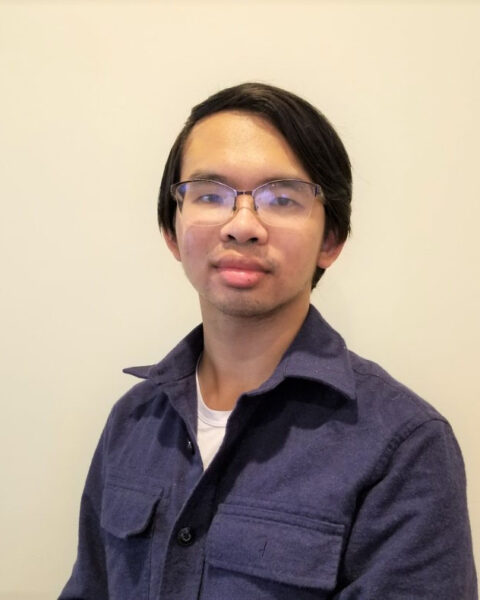 Justin Almendral COE’24, “Wearable Art” Justin Almendral COE’24, “Wearable Art”
Mentor: Victor Zappi, CAMD, Music
Inspired by a movement that challenged the concept of art as a static object, this interdisciplinary arts project brings together faculty from music, theatre, art and design, and games to collaborate on a dynamic, kinetic wearable sculpture produced with a combination of textiles and 3D printed materials. Continuing from Spring 2022, a 3D printed skirt will be iteratively designed and assembled while working with a design and textile team to motorize and skin it. The target for this phase will be to have a working prototype that can use motors and sensor data to responsively expand and contract the skirt. |
 Jake Duffy Khoury’23, “Monte Carlo Simulations of Pentadecanoic Acid Monolayers” Jake Duffy Khoury’23, “Monte Carlo Simulations of Pentadecanoic Acid Monolayers”
Mentor: Mona Minkara, COE, Bioengineering
In this project, I will be using the Monte Carlo technique to conduct computer simulations of pentadecanoic acid (PDA) monolayers. PDA is an amphiphilic fatty acid with a hydrophilic head and a hydrophobic tail, allowing it to form a monolayer on an air-water interface. At a given temperature, the monolayer is equally likely to exist in a higher and lower density state. I will be using the simulations to find the densities of these states. Better understanding the phase properties of PDA monolayers will allow for further understanding of monolayers as a whole. |
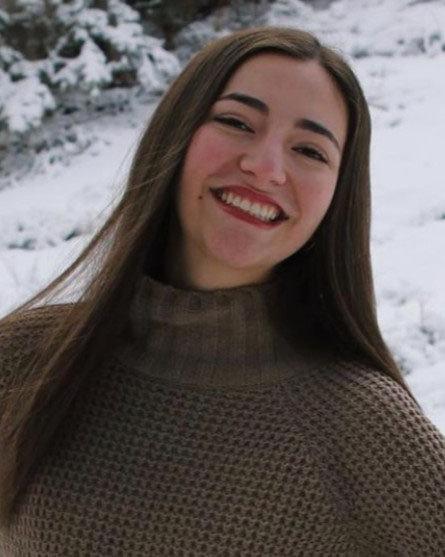 Paloma Figueroa COE’26, “The Role of Mannose Binding Lectin in Response to Tuberculosis” Paloma Figueroa COE’26, “The Role of Mannose Binding Lectin in Response to Tuberculosis”
Mentor: Mona Minkara, COE, Bioengineering
This project seeks to utilize Molecular Dynamics to analyze the relationship between Mannose Binding Lectin in response to tuberculosis entering the lungs. The study will allow for a clearer understanding of how effective MBL is at combating Tuberculosis. I will seek to identify what percentage of tuberculosis MBL is able to combat on an atomic scale. I expect the outcome to be at least over 50% of tuberculosis combatted. There has not been a computational study done on the relationship between MBL and tuberculosis so I look forward to doing so with the guidance of Assistant Professor Mona Minkara. |
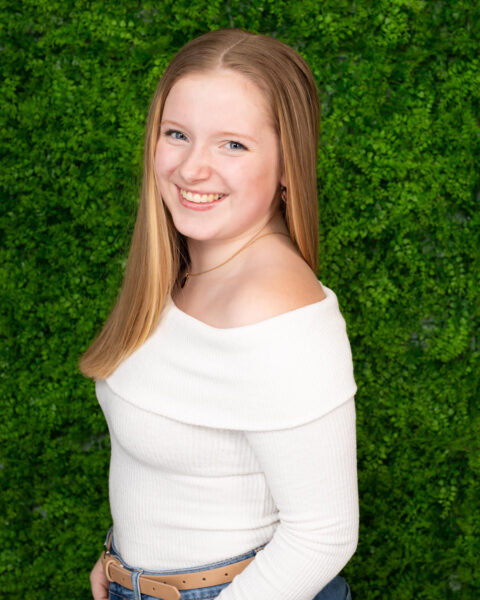 Kelsey Hanle COE’24, “Investigation of Column Liquid Chromatography for Collagen Purification from Crispr-Based Genetically Enhanced Cells” Kelsey Hanle COE’24, “Investigation of Column Liquid Chromatography for Collagen Purification from Crispr-Based Genetically Enhanced Cells”
Mentor: Jeffery Ruberti, COE, Bioengineering
Collagen, due to its abundance and mechanical strength, is advantageous for various therapeutic applications. My research will optimize a purification protocol for substantial amounts of collagen harvested from cells genetically altered with CRISPR to promote collagen production. I will implement liquid chromatography to attain a higher yield and purity, assessed from hydroxyproline assay and gel electrophoresis, than previous methods applied in the Ruberti lab. My work will enhance the development of purified collagen therapeutics of prime structural orientation to effectively aid human bodily functions. I intend to present results at RISE, SB3C, and the Advanced Cell and Tissue Biomanufacturing Conferences. |
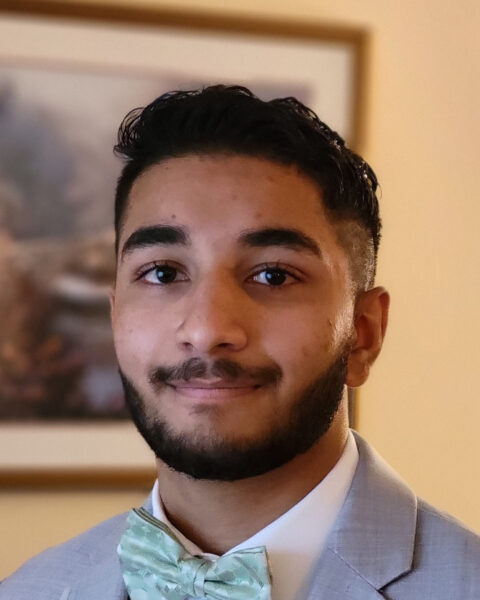 Hamza Iqbal COE’26, “Pneumatic Actuator Motion Characterization” Hamza Iqbal COE’26, “Pneumatic Actuator Motion Characterization”
Mentor: Kris Dorsey, COE, Electrical and Comp Engineering
The goal of this project is to develop a system that can be used to track and quantify the motion of soft pneumatic actuators. This will be accomplished using computer vision and machine learning. This is a significant goal because the movement of soft actuators can be difficult to characterize by conventional methods and using computer vision can allow us to accurately analyze their movements for use in robotics. The anticipated outcome of the project is to produce a model that can accurately predict the movements of soft actuators. |
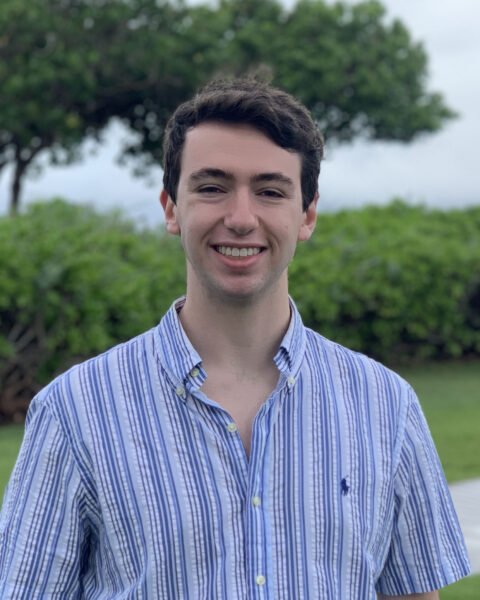 Max Leblang COE’26, “VR Pose Analysis” Max Leblang COE’26, “VR Pose Analysis”
Mentor: Sarah Ostadabbas, COE, Electrical and Comp Engineering
For this project, I will use Meta (Oculus) and VIVE Virtual Reality headsets to analyze synthetically generated 3D poses of animals, adult humans, and infants. The VR headsets will allow me to look at the generated poses in an up-close and interactive way to verify the validity of the poses and adjust any irregularities to improve data quality. I will create a GitHub manual detailing how to setup this and perform this analysis approach, and present the impact my analysis had on model accuracy and a demonstration of my approach at RISE and for the graduate students in the ACLab. |
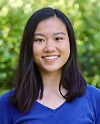 Kara Lui COE’26, “Investigating Fluorescence as an Effective Method of Life Detection Onboard a Rover” Kara Lui COE’26, “Investigating Fluorescence as an Effective Method of Life Detection Onboard a Rover”
Mentor: Allison Dennis, COE, Chemical Engineering
The 1976 Viking lander was the only rover sent to Mars with an in-situ life detection payload, but the results returned to Earth were inconclusive as to whether there is life on Mars. This project will test the effectiveness of luminescent molecules in detecting signs of life on Mars. An ATP-sensing bioluminescent reagent and DNA fluorescent stains will be tested against a soil-water slurry imitating Martian soil collected and mixed with water onboard a rover. The goal is to have a working procedure for implementing fluorescent techniques on a rover, suggesting a feasible life detection system for future Mars missions. |
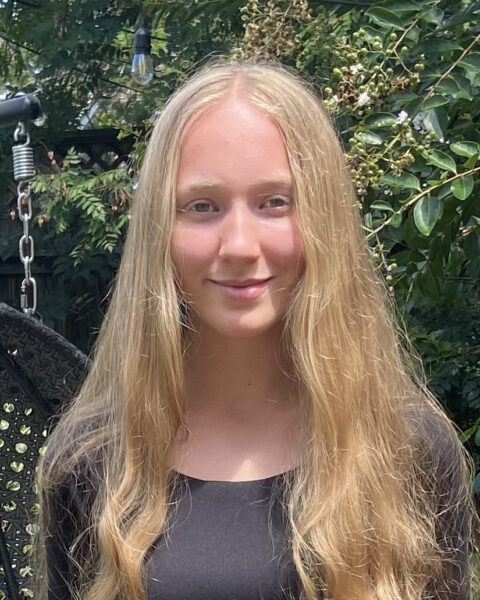 Anna Lunger COE’26, “Hydrogen Sulfide Sequestration via Glutathione Synthesis” Anna Lunger COE’26, “Hydrogen Sulfide Sequestration via Glutathione Synthesis”
Mentor: Benjamin Woolston, COE, Chemical Engineering
Hydrogen sulfide is a molecule that plays complex roles in gut health with potential implications in inflammatory bowel disease. However, sulfide levels are difficult to measure, which makes studying its effects challenging. This project will develop a tool to help elucidate sulfide’s potentially concentration-dependent effects on gut health. We aim to engineer bacteria that can regulate sulfide by converting it into glutathione, a sulfur-containing substance. We will test the bacteria by dosing varying quantities of sulfide. This will show whether conversion is possible and to what extent. This work will be presented at RISE and potentially future on-campus events. |
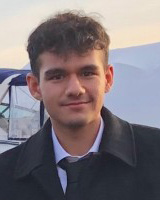 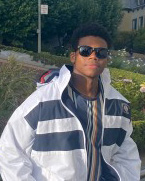 Alexander Pervizi COE’26, Anthony Ngumah COE’25, “Exploring the Waveform for 6G: The Development of Ultrabroadband Networking” Alexander Pervizi COE’26, Anthony Ngumah COE’25, “Exploring the Waveform for 6G: The Development of Ultrabroadband Networking”
Mentor: Josep Jornet, COE, Electrical and Computer Engineering
All innovation must start somewhere. For 6G, this “somewhere” is at the heart of one of the few terahertz (THz) labs in the country: Northeastern’s Ultrabroadband Networking Laboratory. Our research is focused on exploring the optimal waveform for 6th generation mobile networking (6G), that would allow society to modulate much faster terahertz frequency signals for information transfer as opposed to gigahertz used for 5G. Waveforms, being the shape of signals graphed over time, dictate the efficiency of signal transmission over different media. Research into new waveforms to support 6G is now applicable, especially with demands for faster networking in mind. |
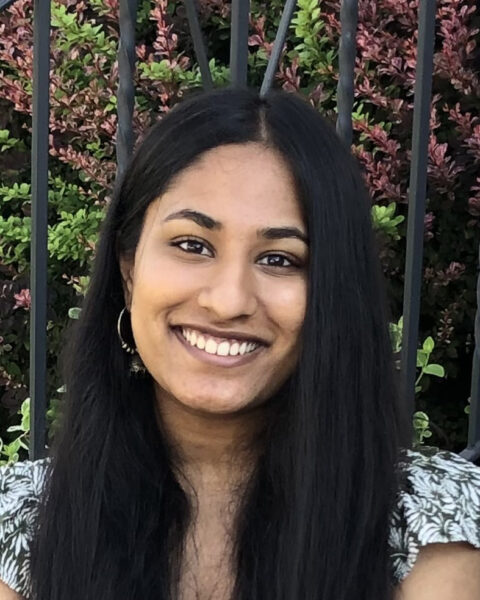 Kaitlyn Ramesh COE’26, “Inferring Gene Expression Dynamics from Low Temporal Resolution Single-Cell Gene Expression Data” Kaitlyn Ramesh COE’26, “Inferring Gene Expression Dynamics from Low Temporal Resolution Single-Cell Gene Expression Data”
Mentor: Mingyang Lu, COE, Bioengineering
A key biology question is to understand the kinetics of cellular processes. A class of computational methods, named pseudotime algorithms, has been developed to infer time dynamics from a snapshot of gene expression in single cells. However, existing methods often cannot identify the complex trajectories of cellular transitions or reflect their timescale. Hence, I am developing a novel algorithm that integrates single-cell gene expression data and low-resolution real time information to accurately infer these transcriptional dynamics. This algorithm will contribute to a quantitative understanding of the cellular dynamics underlying disease and development, and it will be shared in a publication. |
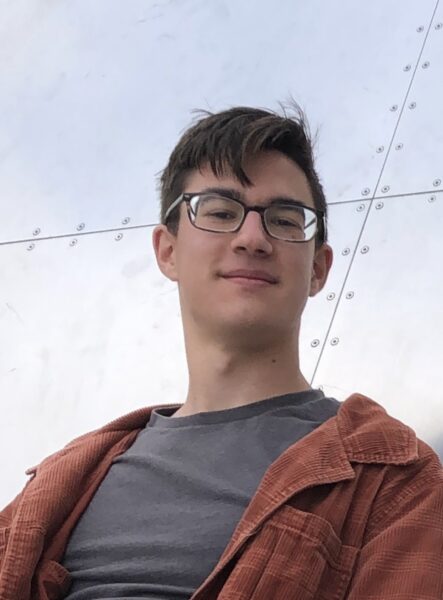 Nolan Smithwick COE’26, “External Attachment Effect on Mobility” Nolan Smithwick COE’26, “External Attachment Effect on Mobility”
Mentor: Alireza Ramezani, COE, Electrical and Comp Engineering
COBRA, the Crater Observing Bio-inspired Rolling Articulator, is a modular snake-inspired robot built for exploration on the moon where traditional wheeled-rovers cannot travel. It can both slither and tumble down steep slopes. My project, External Attachment Effect on Tumbling Mobility, aims to create attachments that can increase its stability while tumbling. I will rapidly prototype different solutions using 3D Printing and perform a series of tests using COBRA on different elevations of slope and on different surfaces. I intend to share my findings at RISE with comprehensive quantitative data on the aspects that best maximize tumbling and slithering mobility performances. |
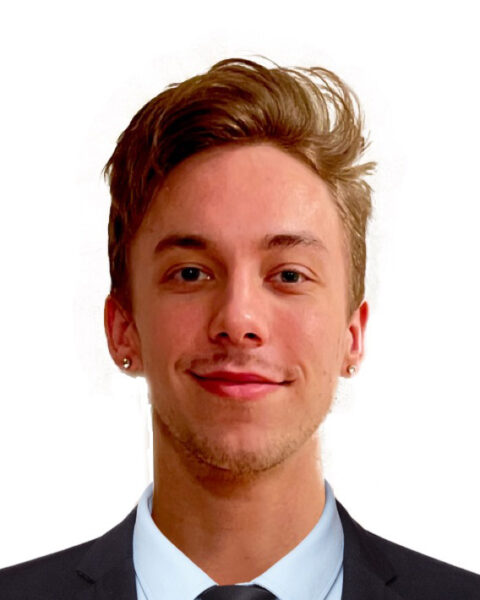 Zach Stolberg COS’24, “Characterizing the Development of Neurospheres to Decrease the Frequency of Neonatal Mice Sacrifice” Zach Stolberg COS’24, “Characterizing the Development of Neurospheres to Decrease the Frequency of Neonatal Mice Sacrifice”
Mentor: Abby Koppes, COE, Chemical Engineering
Many researchers must rely on sacrificial mice to provide their samples for ENS research. I personally find this to be a humane gray area within scientific research, so I plan on optimizing the proliferation of neurospheres in order to reduce the amount of neonatal mice sacrifices. I will isolate and proliferate these neurospheres over the course of 4-5 weeks, and subsequently characterize their development using fluorescence microscopy. This process will be repeated again with slightly different neuron media, and ideally, the neurospheres will proliferate with a higher percentage of neurons usable in ENS research. |
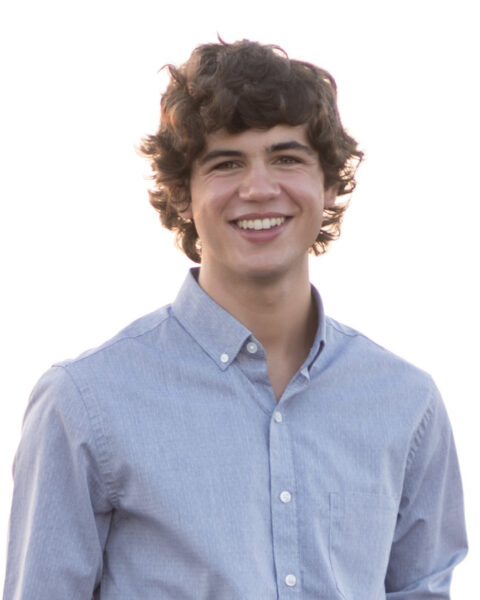 Anthony Zappala COE’26, “Conductive versus Non-conductive Hydrogels for Innervated Organs-On-Chips” Anthony Zappala COE’26, “Conductive versus Non-conductive Hydrogels for Innervated Organs-On-Chips”
Mentor: Ryan Koppes, COE, Chemical Engineering
When neurons are cultured in organs-on-chips, non-conductive hydrogels are typically used as a 3D matrix. My project aims to study the effectiveness of using conductive hydrogels to allow for better recordings of neuron activity. By using a dual-hydrogel chip, the action potential firing rates, degrees of synchronization between neurons, and action potential amplitudes will be compared between the conductive and non-conductive hydrogels to determine which type is more effective. This work will be presented through a poster at RISE. |
| SUMMIT AWARDS |
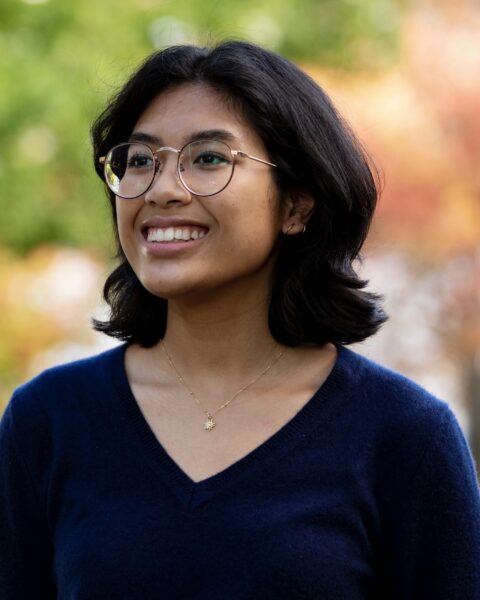 Gillian Audia COE’23, “Microneedle-like Particles for High Bioavailability Oral Peptide Delivery” Gillian Audia COE’23, “Microneedle-like Particles for High Bioavailability Oral Peptide Delivery”
Mentor: Vasiliki Lykourinou, COS, Chemistry & Chemical Biology
Our project goal is to engineer a technology platform for high bioavailability oral protein drug delivery with high reliability to help reduce patient burden and potentially increase patient compliance. I plan to develop and characterize microneedle-like particles for oral protein delivery that penetrate the epithelial barrier in the gastrointestinal tract to enable high bioavailability and achieve consistent drug delivery profiles. I hope to have several top candidate microneedle-like particles for further testing in preclinical animal models and to share the results of our project at the 2022 Materials Research Society Fall Meeting. |
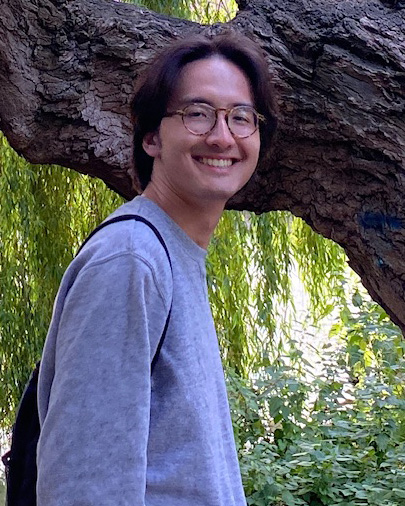 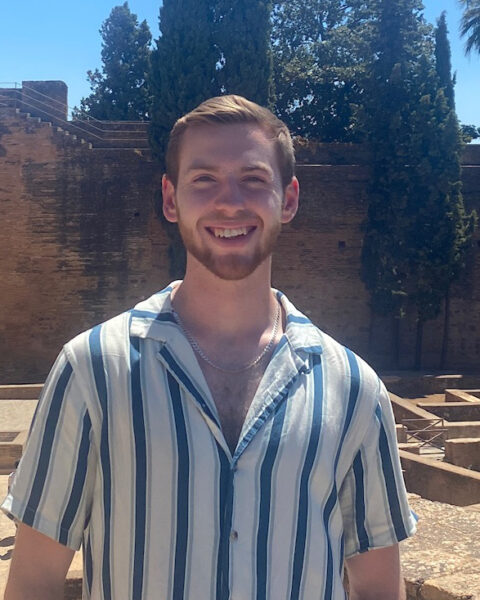 Brant Barbera-Hwang COE’24, Benjamin Lanava COE’2024, “PFAS Removal via Phytoremediation” Brant Barbera-Hwang COE’24, Benjamin Lanava COE’2024, “PFAS Removal via Phytoremediation”
Mentor: Annalisa Onnis-Hayden, COE, Civil & Environmental Engineer
The purpose of our project is to see if phytoremediation, or the use of plants to remove contaminants from water, is a viable option for the removal of PFAS, a newly discovered contaminant of concern. The need for clean water is universal meaning that the outcomes of this research will be applicable to everyone! By testing local water sources and then filtering them through a local plant species native to New England that we believe will be effective at removing PFAS concentrations in water, we expect to see significant reductions in our results that we hope to publish. |
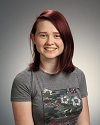 Ashley Brown COS’24, “Exploring Oxygen-Generating Cryogels’ Potential as Delivery System in Prostate Cancer Vaccine” Ashley Brown COS’24, “Exploring Oxygen-Generating Cryogels’ Potential as Delivery System in Prostate Cancer Vaccine”
Mentor: Sidi Bencherif, COE, Chemical Engineering
In my project, I am investigating oxygen-producing cryogels compatibility as a delivery system for a prostate cancer vaccine. In prostate cancer, there is often not enough oxygen present in the tumor microenvironment, a condition known as hypoxia. Hypoxia is part of how tumors are able to evade the immune system and other cancer treatments. If a drug delivery system reversed this hypoxia, it could reinvigorate the immune system and amplify the existing benefits of a cancer vaccine. This could drastically improve cancer patient outcomes. I plan to share my project results at RISE and an appropriate external venue. |
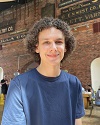 Sam Koblensky COE’24, “Optical Measurement of Micron-Scale Oil-On-Water Films for Characterization of Droplet Impact Dynamics” Sam Koblensky COE’24, “Optical Measurement of Micron-Scale Oil-On-Water Films for Characterization of Droplet Impact Dynamics”
Mentor: Xiaoyu Tang, COE, Mech & Industrial Engineering
Spraying droplets of oil dispersant on marine oil spills is found to be an effective method for cleaning up. Generating a map of different collision outcomes depending on the droplet velocity and oil thickness can help optimize the operating conditions. However, it is challenging to measure the thickness of thin oil films accurately. This project’s goal is to develop an optical method for this thickness measurement and to generate an accurate regime map for water-oil-water collision outcomes. This work will be compiled into a journal publication and presented at RISE and APS March Meeting in 2023. |
 Lee Milburn COE’22, “Dynamic Legged System Lab’s VINUM Project” Lee Milburn COE’22, “Dynamic Legged System Lab’s VINUM Project”
Mentor: Taskin Padir, COE, Electrical and Comp Engineering
My project is researching an image segmentation based navigation approach for quadruped robots in de-structured vineyard environments. Field-work for Vineyards is in short supply, causing their deterioration. This project helps increase the Technological Readiness Level of automated vineyard field-work. I will be training a Mask R-CNN to do image segmentation, sending detections through a Kalman Filter to identify the grapevines, then calling the quadruped controller combined with visual servoing to reach the grapevines. I anticipate combining my navigation with other researcher’s work to create a robot which can navigate vineyards to prune grapevines, and then publishing to external robotics journals. |
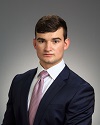 Jason Olszewski COE’24, “Mechanical Force Dependence of Organized Collagenous Structure Development” Jason Olszewski COE’24, “Mechanical Force Dependence of Organized Collagenous Structure Development”
Mentor: Jeffrey Ruberti, COE, Bioengineering
My research goal is to understand the mechanism of tissue formation by studying the effect of mechanical forces on collagen assembly. I will fabricate disorganized, non-fluorescent and fluorescent collagen sheets. Using a bioreactor, I will cyclically load only the non-fluorescent sheet while it is attached to the fluorescent collagen substrate. Through microscopy, I will determine whether cyclic forces induce migration of fluorescent collagen to the loaded sheet, and organization of collagen fibrils within the loaded sheet. T his will enhance our understanding of tissue formation, establishing a foundation for tendon engineering therapeutics. I will present results at RISE, SB3C, and NCUR. |
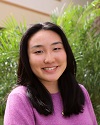 Aida Wen COE’24, “Development of Biocompatible Polyetheretherketone for Orthopedic Implants” Aida Wen COE’24, “Development of Biocompatible Polyetheretherketone for Orthopedic Implants”
Mentor: Jeffrey Ruberti, COE, Bioengineering
Polyetheretherketone (PEEK) is a widely used material in medical devices because it mechanically mimics human bone. However, it integrates poorly with tissue, resulting in inflammation and implant rejection. Existing methods that improve its biocompatibility involve complex, high-cost processes with limited clinical transferability. Thus, a simpler method for increasing PEEK biocompatibility will significantly expand implant abilities and patient treatment. My objective is to develop a combination treatment of sulfuric acid, beta-tricalcium phosphate, and collagen to create modified PEEK that is biocompatible, retains its mechanical properties, and supports implant integration. I will share my results at Northeastern RISE and Society for Biomaterials. |





















